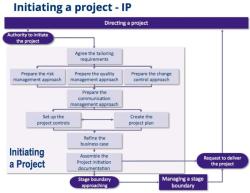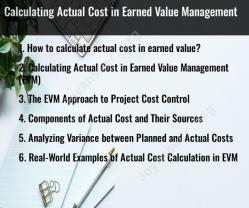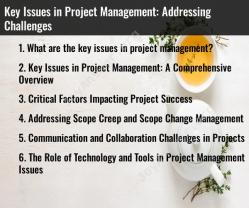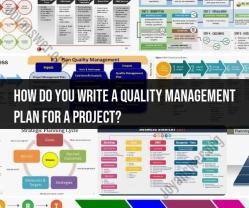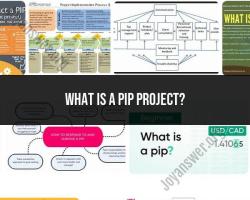How do you write a quality management plan for a project?
A Quality Management Plan (QMP) is a crucial document for ensuring that a project meets its quality objectives and delivers a satisfactory outcome. Here's a step-by-step guide on how to write a quality management plan for your project:
Define Project Objectives:Start by clearly defining the project's overall objectives, scope, and quality expectations. What are the specific quality requirements and standards that must be met? Ensure that these objectives align with the project's overall goals.
Identify Stakeholders:Determine who the key stakeholders are, both internal and external, who have an interest in the project's quality. Consider the expectations and concerns of these stakeholders when developing the QMP.
Select Quality Standards:Identify the relevant quality standards, guidelines, or industry best practices that apply to your project. These standards will serve as benchmarks for measuring quality.
Establish Quality Metrics:Define specific quality metrics and Key Performance Indicators (KPIs) that will be used to assess the project's performance and adherence to quality standards. These metrics should be measurable and quantifiable.
Design Quality Processes:Outline the processes and procedures that will be used to achieve and maintain quality throughout the project's lifecycle. This includes quality control, quality assurance, and quality improvement processes.
Assign Roles and Responsibilities:Clearly define the roles and responsibilities of team members and stakeholders in relation to quality management. Identify who will be responsible for quality planning, quality control, and quality assurance activities.
Risk Assessment:Conduct a risk assessment to identify potential quality risks and issues that may arise during the project. Develop strategies and contingency plans to address these risks.
Quality Control Activities:Describe the specific activities that will be conducted to monitor and control the quality of project deliverables. This may include inspections, reviews, audits, and testing procedures.
Quality Assurance Activities:Detail the activities that will be carried out to ensure that quality standards are met throughout the project. This may involve process audits, training, and process improvements.
Documentation and Reporting:Specify how quality-related information will be documented and reported. This includes creating quality records, maintaining logs, and generating quality reports for stakeholders.
Communication Plan:Outline how communication regarding quality issues will be handled. Define the reporting structure for escalating and addressing quality concerns.
Change Management:Describe how changes to the project scope or requirements will be managed in terms of their impact on quality. Ensure that any changes are assessed for their potential effect on quality objectives.
Review and Approval Process:Establish a process for reviewing and approving the QMP. Ensure that key stakeholders have the opportunity to provide input and approve the plan before implementation.
Implementation and Monitoring:Implement the quality management plan as the project progresses. Continuously monitor and measure quality metrics, and make necessary adjustments to ensure that quality objectives are met.
Continuous Improvement:Emphasize the importance of continuous improvement in quality management. Regularly review the effectiveness of quality processes and make improvements as needed.
Closure and Evaluation:Conduct a final evaluation of the project's quality performance during the project closure phase. Document lessons learned and best practices for future projects.
Documentation Archive:Ensure that all quality-related documentation, including records and reports, is properly archived for future reference and audit purposes.
Training and Awareness:Provide training to team members and stakeholders to ensure they understand and adhere to the quality management plan.
Compliance and Auditing:Ensure that the project complies with relevant quality standards and is prepared for any internal or external audits.
Review and Update:Periodically review and update the quality management plan to reflect changes in project scope, objectives, or quality requirements.
Writing a comprehensive Quality Management Plan ensures that quality considerations are integrated into all aspects of your project, leading to a successful outcome that meets or exceeds stakeholders' expectations.
Writing a Quality Management Plan for Your Project: Step-by-Step
To write a quality management plan (QMP) for your project, follow these steps:
- Identify the project's quality objectives. What are the specific quality standards that you want the project to meet? These objectives should be specific, measurable, achievable, relevant, and time-bound.
- Identify the project's quality risks. What are the potential factors that could threaten the project's quality? These risks could be internal factors, such as a lack of resources or expertise, or external factors, such as changes in market conditions or customer requirements.
- Develop quality control and quality assurance processes. Quality control activities are used to measure the project's progress against the quality objectives and to identify any problems. Quality assurance activities are used to prevent problems from occurring in the first place.
- Assign responsibilities for quality control and quality assurance activities. Who will be responsible for monitoring the project's progress against the quality objectives? Who will be responsible for developing and implementing quality control and quality assurance processes?
- Document the QMP. The QMP should be a written document that describes the project's quality objectives, quality risks, and quality control and quality assurance processes. It should also assign responsibilities for quality control and quality assurance activities.
Essential Components of an Effective Quality Management Plan
An effective QMP should include the following components:
- Quality objectives: The QMP should clearly define the quality standards that the project must meet. These objectives should be specific, measurable, achievable, relevant, and time-bound.
- Quality risks: The QMP should identify the potential factors that could threaten the project's quality. These risks could be internal factors, such as a lack of resources or expertise, or external factors, such as changes in market conditions or customer requirements.
- Quality control and quality assurance processes: The QMP should describe the processes that will be used to measure the project's progress against the quality objectives and to prevent problems from occurring in the first place.
- Responsibilities: The QMP should assign responsibilities for quality control and quality assurance activities.
Ensuring High-Quality Project Deliverables: Your Guide to Quality Management
Here are some tips for ensuring high-quality project deliverables:
- Start with a clear understanding of the customer's requirements. Make sure that you understand what the customer expects from the project deliverables. This will help you to develop quality control and quality assurance processes that are aligned with the customer's requirements.
- Set realistic quality standards. Don't set quality standards that are too difficult or impossible to meet. This will only lead to frustration and disappointment.
- Involve the entire team in the quality management process. Quality management is everyone's responsibility. Make sure that everyone on the team is aware of the project's quality objectives and that they are involved in developing and implementing quality control and quality assurance processes.
- Monitor the project's progress closely. Use quality control activities to monitor the project's progress against the quality objectives. This will help you to identify and address any problems early on.
- Be prepared to make changes. If you identify any problems during the project, be prepared to make changes to the quality control and quality assurance processes, or to the project plan itself.
By following these tips, you can ensure that your project deliverables are of high quality.


